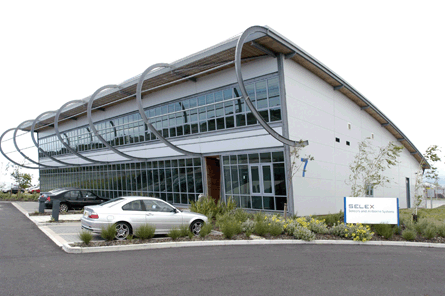Wales has got used to finding new uses for redundant infrastructure, whether opening museums at former collieries, or call centres and business parks where once stood smokestack factories.
"Adapting and surviving is something we've always had to do here," says Mark Norris, head of aerospace at the Welsh Assembly Government, whose job it is to promote the country's aerospace sector and to attract investors.
PAINFUL DECISIONS
Wales has often been at the painful end of business decisions made elsewhere, from the closure of mines and foreign-owned assembly plants to the Ministry of Defence's decision in 2006 to shut its defence repair facility at the St Athan Royal Air Force base, near Cardiff. It came just a year after the opening of a 45,000m2 (485,000ft2) six-bay superhangar to maintain a fleet of BAE Systems Harrier GR7s and Panavia Tornado GR4s.
The assembly government was left holding the baby - in this case the whole 140Ha (345 acre) airfield of which the RAF was interested in keeping only a small part and dealing with the fallout of 450 civilian maintenance jobs being lost.
 |
|---|
© ParcAberporth |
Salvation arrived when two years ago the MoD handed the Qinetiq-led Metrix consortium the contract to build and run the main facility of its new tri-service Defence Technical College at St Athan. Construction work on the campus - which will incorporate the superhangar - is scheduled to begin next year, opening in 2014.
The assembly government is confident the training school will encourage other tenants to move to a planned aerospace park on the rest of the air base, using some of the smaller redundant hangars and units and keeping the runway active. Isle of Wight-based airframer Britten-Norman has a base to maintain its Islander-based Defender special mission variants, while Bond Air Services houses the Eurocopter EC135 helicopter it operates for two local police forces at St Athan.
On the isolated west coast of Wales, the assembly government has been for five years luring the unmanned air systems community to set up shop - temporarily or permanently - at ParcAberporth, another former military camp next to the Qinetiq-run MoD missile firing range overlooking Cardigan Bay.
The site's selling points include access to restricted airspace, a pool of former military support personnel and purpose-built business units. The assembly government owns the business park that sits alongside the privately run West Wales airport.
In a bid to market the site, the assembly government has run an unmanned systems conference, exhibition and flying display at ParcAberporth every summer since 2004. However, funding for the event has now dried up. "Running the event every year was not sustainable in the long run," says Norris. "However, it has done its job to get us on the UAV map."
Big name tenants have begun to trickle into ParcAberporth. Italian company Selex has a base there and plans to fly its Falco tactical UAV there this year. Thales UK and its partner Elbit Systems have flown the Elbit Hermes 450 at ParcAberporth and will use the facility there to test its WK450 Watchkeeper variant being developed for the UK.
 |
|---|
© Selex |
The park also has the offices of the ASTREA (Autonomous Systems Technology Related Airborne Evaluation and Assessment) project, which brings together many of the major unmanned systems developers, academics and government representatives, and aims to come up with ways of opening UK civil airspace to UAVs.
Some have been disappointed that ParcAberporth has not brought mass employment to an economically challenged area of Wales. ParcAberporth has been a "slow burn", admits Norris. "It's not the type of project that creates instant jobs."
However, by creating a UK centre of excellence for UAV development, it has "embedded knowhow", he says. "The critical thing is using it as a lever and bringing in intellectual property."
Source: Flight International























